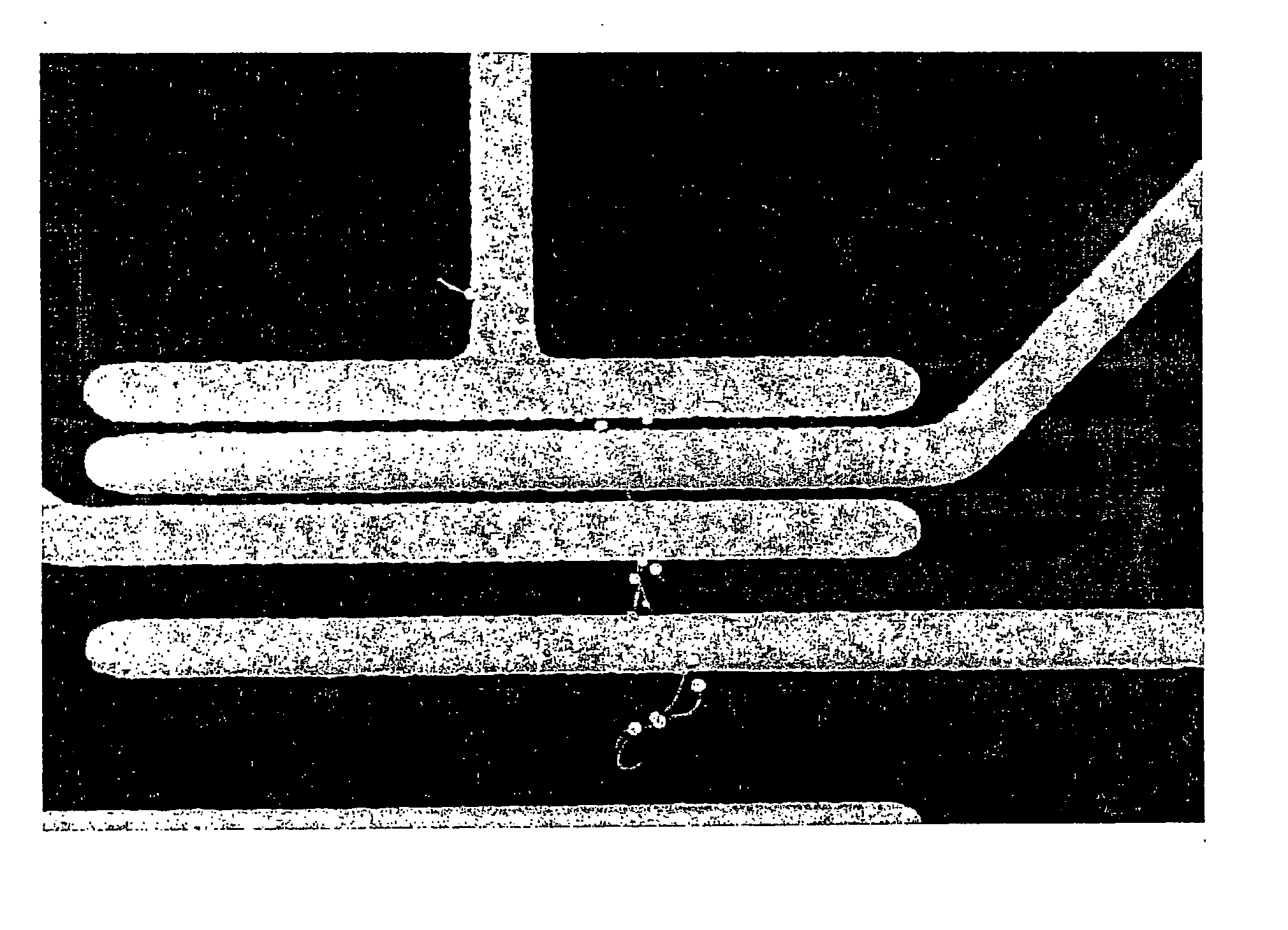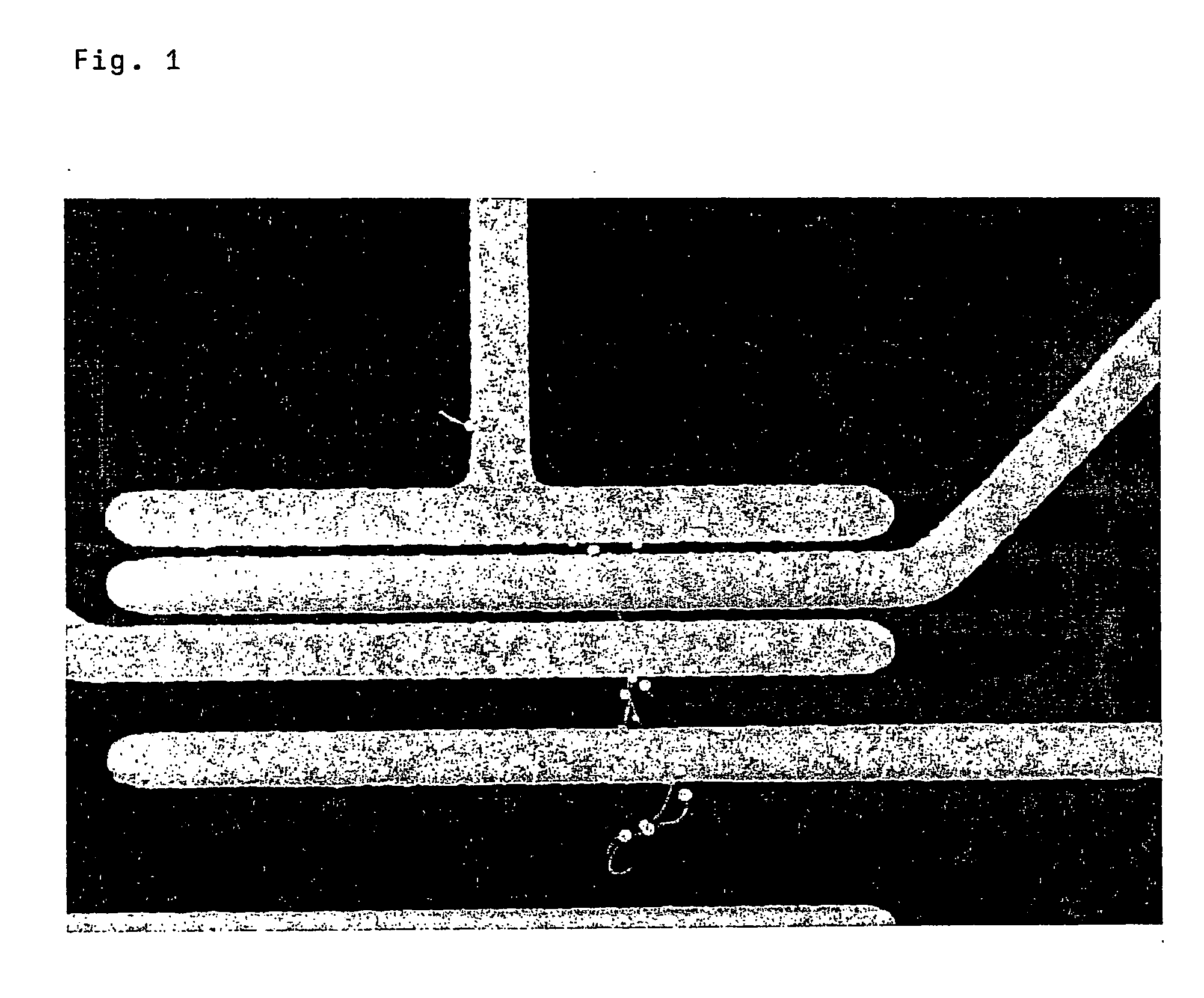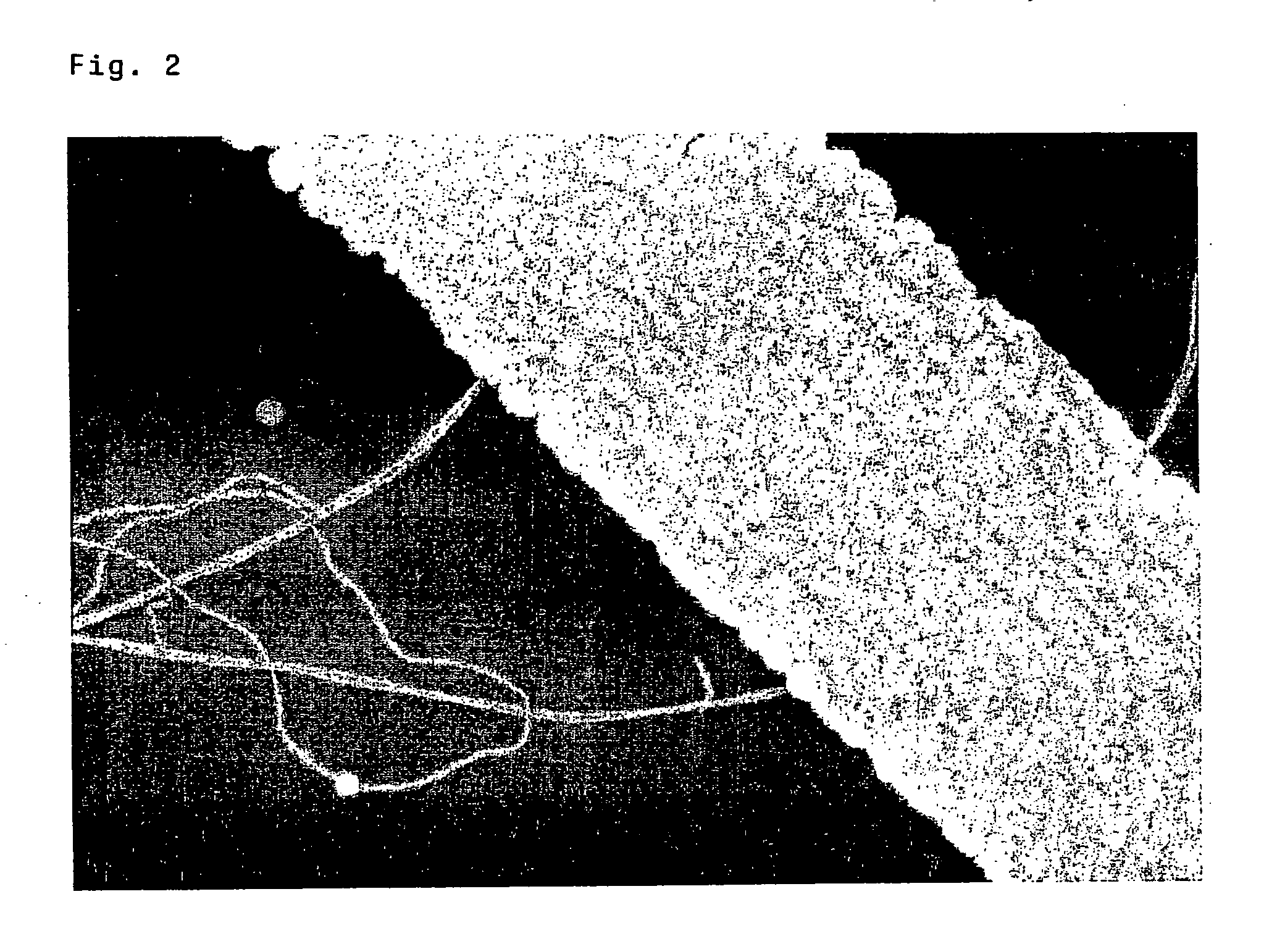Contact-connection of nanotubes
a nanotube and contact technology, applied in the direction of discharge tube main electrodes, liquid/solution decomposition chemical coatings, semiconductor/solid-state device details, etc., can solve the problems of high cost, high resistance, and inability to achieve low-resistance contact between nanotubes and interconnects at considerable cost, so as to achieve the lowest possible resistance
- Summary
- Abstract
- Description
- Claims
- Application Information
AI Technical Summary
Benefits of technology
Problems solved by technology
Method used
Image
Examples
example
[0029] First of all, a thin (approximately 10-20 nm) iron and gold layer is applied to a silicon substrate on which there is arranged an SiO2 layer amounting to a few hundred nanometers, by means of a sputtering technique using a conventional photoresist mask which has already been pre-patterned with the predetermined contact surfaces or interconnects. Alternatively, a titanium-gold layer was also applied, and a 10 nm thick iron layer was then sputtered onto this layer. After the lift-off step, the correspondingly desired, predetermined interconnect pattern was obtained on the SiO2 surface.
[0030] Then, a dispersion of carbon nanotubes in dimethylformamide / isopropanol was applied by spraying to the substrate which had been provided with the predetermined interconnect pattern (airbrush process).
[0031] Then, the substrate was immersed for 15 seconds in an ammoniacal metallization solution at a temperature of 85° C. which, with a pH of approximately 9, contained approximately 21 g of ...
PUM
| Property | Measurement | Unit |
|---|---|---|
| Contact resistance | aaaaa | aaaaa |
| Deposition rate | aaaaa | aaaaa |
Abstract
Description
Claims
Application Information
 Login to View More
Login to View More - R&D
- Intellectual Property
- Life Sciences
- Materials
- Tech Scout
- Unparalleled Data Quality
- Higher Quality Content
- 60% Fewer Hallucinations
Browse by: Latest US Patents, China's latest patents, Technical Efficacy Thesaurus, Application Domain, Technology Topic, Popular Technical Reports.
© 2025 PatSnap. All rights reserved.Legal|Privacy policy|Modern Slavery Act Transparency Statement|Sitemap|About US| Contact US: help@patsnap.com



